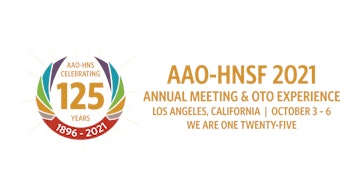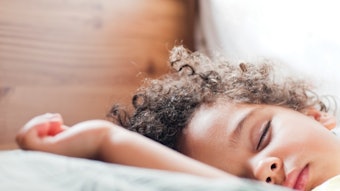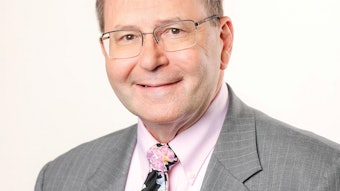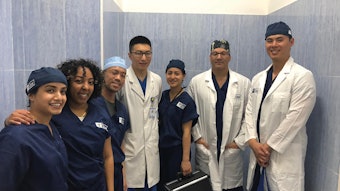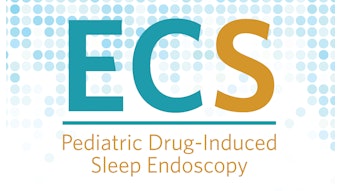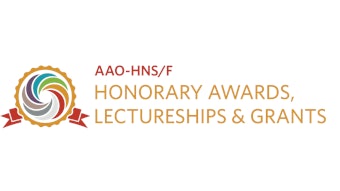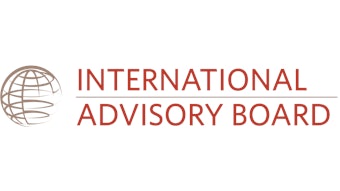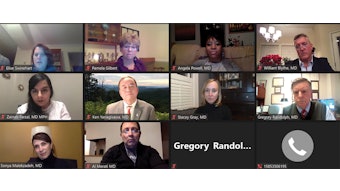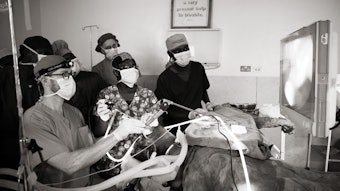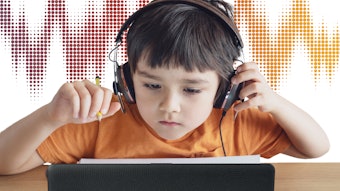Out of Committee: Equilibrium | Vestibular and Balance Dysfunction in Children with Sensorineural Hearing Loss
Sensorineural hearing loss (SNHL) is the most common congenital sensory impairment, occurring in three out of every 1,000 live births.
Sharon L. Cushing, MD, and Robert C. O’Reilly, MD
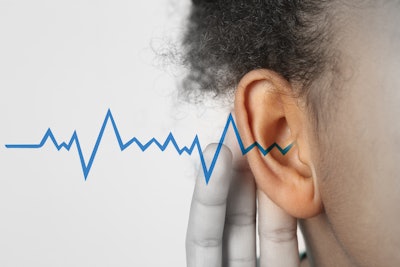
Sensorineural hearing loss (SNHL) is the most common congenital sensory impairment, occurring in three out of every 1,000 live births.1 The prevalence of vestibular impairment in children with SNHL is high, ranging between 20%-70%2-6 with 35% displaying severe/complete impairment of the vestibular end organs,2,7 which translates into balance impairments.8,9 Dysfunction is often missed as most children with vestibular dysfunction will never be vertiginous. Given this high prevalence and the challenges in recognizing these deficits, children presenting with SNHL should be regularly screened for vestibular and balance dysfunction.3,10-12
Impact of Etiology
The risk of having concurrent cochleovestibular loss is dependent upon the etiology of the SNHL.2 The capacity of diagnostic tools, such as imaging, molecular genetic techniques, and virology testing, are enhanced by providing accurate and detailed phenotypic description of the child. This should include vestibular and balance assessment. The most common etiologies of deafness associated with severe vestibular impairment are:- Genetic causes nonsyndromic mimickers such as Usher Syndrome Type 113 and CHARGE syndrome14
- Cochleovestibular anomalies such as incomplete partitions15
- Acquired infections such as meningitis16, 17, 18, 19, 20 and congenital cytomegalovirus (cCMV)21-23,24
- Ototoxicity (i.e., aminoglycosides25 or chemotherapeutics26)
Just as SNHL can present with varying degrees of severity and any rate of progression, so too can vestibular impairment. Although the risk of vestibular impairment is highest in those with the most significant cochlear deficits,27-31 the co-existence of both sensory deficits with respect to degree and time course can follow any pattern.
Impact of Cochlear Implantation
No discussion about vestibular impairment in SNHL would be complete without considering the impact of implantation on inner ear function. The literature is heterogeneous as methodologies used to quantify impact are variable. Initial reports of dysfunction following cochlear implantation (CI) were based only on subjective complaints of dizziness, occurring in 2%-49% of patients and more likely in adults with increasing age.32-40 The risk of losing or significantly diminishing horizontal canal function based on caloric testing following CI ranges between 0 and 77%.3, 36, 39, 41-51 The most robust data in the pediatric population comes from carefully obtained pre- and postoperative vestibular function testing. This data was used in order to estimate the risk of total bilateral vestibular loss following bilateral simultaneous CI. Overall that risk was felt to be in the order of 2%.6, 20, 52, 53 Although this risk should not be ignored when considering bilateral CI in children, it is important to note that this risk of total bilateral vestibular loss is exceeded by the underlying etiology of the deafness itself. In summary, regarding the risk of vestibular injury from CI:- Adults and children are different both in their risk of vestibular impairment at baseline and following CI and this primarily reflects differences in etiology.
- The great majority of children receiving a CI have a pre-existing vestibular impairment at baseline prior to surgery.
- Vestibular injury can be induced by CI.
Screening for Vestibular Impairment in Children with SNHL
Identifying vestibular and balance impairment is important in children presenting with SNHL. However, the challenges of doing so present barriers. A screening algorithm, such as the following, can be applied in the clinical setting to better identify those at risk of vestibular impairment who should receive more thorough testing:- Review of motor milestones (Table 1)
- Assessment of balance – one-foot standing (Table 2)54
- Assessment of horizontal canal function
Screening assessment of horizontal canal function can be done without specialized equipment using a clinical head impulse test. Additionally, infants younger than six months of age display a developmental inability to suppress their vestibulo-ocular reflex response allowing for easy assessment of the horizontal canal. This can be done by spinning the child (and the caregiver on whose lap they sit) on a stool and examining for postrotary nystagmus (fast-phase directed away from the direction of the acceleration).55 Ideally, all three items of the screening assessment would be performed; however, completion of any single one may identify a child at risk of vestibular dysfunction.
Functional Impact of Vestibular and Balance Impairment
At minimum, vestibular loss carries a number of safety concerns that should be relayed to patients. Absence of bilateral horizontal canal function (areflexia), saccular dysfunction, and poor balance measured on objective tests of function have been demonstrated to increase the odds of CI device failure 7.6 times,56 with failure defined as mechanical or electrical malfunction of the surgically implanted internal component.It is expected that children who are deaf and have concurrent vestibular impairments will be delayed in their motor milestones.9, 19, 20, 57 However, given the vestibular system’s far-reaching projections throughout the brain, impairment leads to deficits beyond locomotion58 and plays a role in neurocognition, including perceptual and visuospatial ability,59 memory, and executive function. Neuroanatomically bilateral vestibular deficits are correlated with decreased hippocampal volume.60 The bulk of the literature examining the vestibular-cognitive relationship focuses on deficits resulting from acquired vestibular loss, but congenital absence of vestibular function may lead to a distortion of typical brain development as demonstrated in congenital hearing or other sensory losses. There is likely a critical period to develop accurate spatial representations akin to those for linguistic development.61 Much of the resulting cognitive deficits may occur from brain changes at the level of the hippocampus that result from an absence of vestibular input during that critical time period. The direct impact of this sensory deprivation could be a failure to develop a construct for the relative representation of both the body and other objects in space. Poor hippocampal development may contribute to broader issues with learning, memory, and executive function.61
Balance deficits also occur in children with unilateral profound SNHL.62 Multiple factors are likely to contribute to their poorer balance skills including the following:
- Unrehabilitated unilateral hearing loss in early development that promotes an “aural preference syndrome” where hearing is biased to one ear, compromising spatial hearing.63, 64
- Combined impairment of both hearing and vestibular function with the prevalence of end organ specific dysfunction (otoliths and horizontal canal) ranging from 17%-48%.65
This high prevalence of vestibular impairment again is likely related to the etiologies leading to unilateral hearing loss (i.e., cochlear nerve aplasia, cCMV, cochleovestibular anomalies, and sudden SNHL).66, 67 It is becoming clear that the role of this dual sensory impairment is underestimated in children with unilateral SNHL and needs to be considered as we measure outcomes following intervention (i.e., CI for single-sided deafness).
Exploring Rehabilitative Strategies
Different therapeutic approaches can be used for the rehabilitation of children with loss of vestibular sensitivity by capitalizing on the developing brain’s remarkable plasticity.Children with SNHL and reduced/absent vestibular function may benefit from practicing balance strategies in various environmental contexts to prime their visual and somatic senses facilitating compensation. More specifically, a 10-day exercise program focused on activities of static balance can lead to significant improvement in standing balance duration in children with SNHL compared with untreated hearing-impaired controls.68
While initial concerns were that CI may negatively impact vestibular function and balance, evidence exists that CI may actually positively influence balance function. Small improvements in performance have been documented on computerized dynamic posturography (CDP) in some individuals following CI activation.45, 3 In addition, children with SNHL and implants perform better on standardized test of balance function (BOT-2 balance subset) with their CI on versus off57, and this benefit is achieved both in settings of directional sound as well as nondirectional white noise.69 Although we recognize the importance of visual, somatosensory, and vestibular cues in the maintenance of balance, the contribution of hearing is rarely considered. A theoretical possibility is that balance improvement is related to extra-cochlear spread of current. Electrical activity from the CI is known to reach the vestibular end organs. Vestibular evoked myogenic potentials (VEMPs), a measure of otolithic function, can be elicited with electrical stimulation in children with CI. The presence of electric VEMPs in acoustically nonresponsive ears, along with their shorter latencies, suggests that electrical current can bypass the otoliths and directly stimulate vestibular neural elements.70 Additionally, the perception of visual vertical can be improved in the presence of CI stimulation.71 Building on this principle, the functionality of the intracochlear electrode array may be used to provide head-referenced cues to improve balance.72 Others have been working to more directly activate the vestibular end organs using separate electrode arrays targeting the posterior labyrinth.73-75, 76-81 The hope is that ongoing advancements in all strategies will provide a number of potential therapeutic options to address the balance impairment due to vestibular dysfunction.
Summary
Vestibular impairment and balance deficits are the most frequent co-existing clinical features in children with SNHL. These dual sensory impairments often result from a shared etiology but can also occur as a side effect of CI. Recognition of vestibular deficits in children who are deaf is vitally important as they have impact on motor development, balance skills, and safety. These vestibular deficits increase the risk of implant failure and negatively affect cognitive development. Early identification and rehabilitation of these vestibular and balance deficits are necessary to optimize function over the course of a lifetime.References
1. NCHAM. National Center for Hearing Assessment and Management. 2006.
2. Cushing SL, Gordon KA, Rutka JA, James AL, Papsin BC. Vestibular end-organ dysfunction in children with sensorineural hearing loss and cochlear implants: an expanded cohort and etiologic assessment. Otol Neurotol. 2013;34:422-8.
3. Buchman CA, Joy J, Hodges A, Telischi FF, Balkany TJ. Vestibular effects of cochlear implantation. Laryngoscope. 2004;114:1-22.
4. Licameli G, Zhou G, Kenna MA. Disturbance of vestibular function attributable to cochlear implantation in children. Laryngoscope. 2009;119:740-5.
5. Selz PA, Girardi M, Konrad HR, Hughes LF. Vestibular deficits in deaf children. Otolaryngol Head Neck Surg. 1996;115:70-7.
6. Jacot E, Van Den Abbeele T, Debre HR, Wiener-Vacher SR. Vestibular impairments pre- and post-cochlear implant in children. Int J Pediatr Otorhinolaryngol. 2009;73:209-17.
7. Cushing SL, Papsin BC, Gordon KA. Incidence and characteristics of facial nerve stimulation in children with cochlear implants. Laryngoscope. 2006;116:1787-91.
8. Cushing SL CR, James AL, Papsin BC, Gordon KA The Vestibular Olympics : a test of dynamic balance function in children with cochlear implants. Arch Otorhinolaryngol. 2007;134.:34-8.
9. De Kegel A, Maes L, Baetens T, Dhooge I, Van Waelvelde H. The influence of a vestibular dysfunction on the motor development of hearing-impaired children. Laryngoscope. 2012;122:2837-43.
10. Ketola S, Niemensivu R, Henttonen A, Appelberg B, Kentala E. Somatoform disorders in vertiginous children and adolescents. Int J Pediatr Otorhinolaryngol. 2009;73:933-6.
11. Cushing SL, MacDonald L, Propst EJ, Sharma A, Stockley T, Blaser SL, et al. Successful cochlear implantation in a child with Keratosis, Icthiosis and Deafness (KID) Syndrome and Dandy-Walker malformation. Int J Pediatr Otorhinolaryngol. 2008;72:693-8.
12. Oyewumi M, Wolter NE, Heon E, Gordon KA, Papsin BC, Cushing SL. Using Balance Function to Screen for Vestibular Impairment in Children With Sensorineural Hearing Loss and Cochlear Implants. Otol Neurotol. 2016;37:926-32.
13. Kletke S, Batmanabane V, Dai T, Vincent A, Li S, Gordon KA, et al. The combination of vestibular impairment and congenital sensorineural hearing loss predisposes patients to ocular anomalies, including Usher syndrome. Clinical genetics. 2017;92:26-33.
14. Abadie V, Wiener-Vacher S, Morisseau-Durand MP, Poree C, Amiel J, Amanou L, et al. Vestibular anomalies in CHARGE syndrome: investigations on and consequences for postural development. Eur J Pediatr. 2000;159:569-74.
15. Okumura T, Takahashi H, Honjo I, Naito Y, Takagi A, Tuji J, et al. Vestibular function in patients with a large vestibular aqueduct. Acta Otolaryngol Suppl. 1995;520 Pt 2:323-6.
16. Kaplan SL, Goddard J, Van Kleeck M, Catlin FI, Feigin RD. Ataxia and deafness in children due to bacterial meningitis. Pediatrics. 1981;68:8-13.
17. Lindberg J, Rosenhall U, Nylen O, Ringner A. Long-term outcome of Hemophilus influenzae meningitis related to antiobiotic treatment. Pediatrics. 1977;60:1-6.
18. Cushing SL, Gordon KA, Rutka JA, James AL, Papsin BC. Vestibular End-Organ Dysfunction in Children with Sensorineural Hearing Loss and Cochlear Implants: An Expanded Cohort and Etiologic Assessment. Otol Neurotol. 2012;in press.
19. Cushing SL, Papsin BC, Rutka JA, James AL, Blaser SL, Gordon KA. Vestibular end-organ and balance deficits after meningitis and cochlear implantation in children correlate poorly with functional outcome. Otol Neurotol. 2009;30:488-95.
20. Wiener-Vacher SR, Obeid R, Abou-Elew M. Vestibular impairment after bacterial meningitis delays infant posturomotor development. J Pediatr. 2012;161:246-51 e1.
21. Teissier N, Bernard S, Quesnel S, Van Den Abbeele T. Audiovestibular consequences of congenital cytomegalovirus infection. European annals of otorhinolaryngology, head and neck diseases. 2016;133:413-8.
22. Nassar MN, Elmaleh M, Cohen A, Van Den Abbeele T, Wiener-Vacher SR, Teissier N. Vestibular Calcification in a Case of Congenital Cytomegalovirus Infection. Otol Neurotol. 2015;36:e107-9.
23. Bernard S, Wiener-Vacher S, Van Den Abbeele T, Teissier N. Vestibular Disorders in Children With Congenital Cytomegalovirus Infection. Pediatrics. 2015;136:e887-95.
24. Karltorp E, Lofkvist U, Lewensohn-Fuchs I, Lindstrom K, Eriksson Westblad M, Tear Fahnehjelm K, et al. Impaired balance and neurodevelopmental disabilities among children with congenital cytomegalovirus infection. Acta Paediatr. 2014.
25. Phillips JA, Bell SC. Aminoglycosides in cystic fibrosis: a descriptive study of current practice in Australia. Internal medicine journal. 2001;31:23-6.
26. Papaioannou V, Sokolov M, Nathan P, Gordon K, Papsin B, Cushing S. Vestibulotoxicity Following Paediatric Cancer Treatment. Society for Ear Nose and Throat Advances in Children. Austin, TX2016.
27. Brookhouser PE, Cyr DG, Beauchaine KA. Vestibular findings in the deaf and hard of hearing. Otolaryngol Head Neck Surg. 1982;90:773-7.
28. Huygen PL, van Rijn PM, Cremers CW, Theunissen EJ. The vestibulo-ocular reflex in pupils at a Dutch school for the hearing impaired; findings relating to acquired causes. Int J Pediatr Otorhinolaryngol. 1993;25:39-47.
29. Rosenblut B, Goldstein R, Landau WM. Vestibular responses of some deaf and aphasic children. Ann Otol Rhinol Laryngol. 1960;69:747-55.
30. Sandberg L, Terkildsen K. Caloric tests in deaf children. Arch Otorhinolaryngol. 1965;81:350-4.
31. Goldstein R, Landau E, Kleffner F. Neurological assessment of some deaf and aphasic children. Ann Otol Rhinol Laryngol. 1958;67:468-79.
32. Black FO, Lilly DJ, Peterka RJ, Fowler LP, Simmons FB. Vestibulo-ocular and vestibulospinal function before and after cochlear implant surgery. Ann Otol Rhinol Laryngol Suppl. 1987;96:106-8.
33. Cohen NL, Hoffman RA, Stroschein M. Medical or surgical complications related to the Nucleus multichannel cochlear implant. Ann Otol Rhinol Laryngol Suppl. 1988;135:8-13.
34. Enticott JC, Tari S, Koh SM, Dowell RC, O'Leary SJ. Cochlear implant and vestibular function. Otol Neurotol. 2006;27:824-30.
35. Huygen PL, van den Broek P, Spies TH, Mens LH, Admiraal RJ. Does intracochlear implantation jeopardize vestibular function? Ann Otol Rhinol Laryngol. 1994;103:609-14.
36. Ito J. Influence of the multichannel cochlear implant on vestibular function. Otolaryngol Head Neck Surg. 1998;118:900-2.
37. Kempf HG, Johann K, Lenarz T. Complications in pediatric cochlear implant surgery. Eur Arch Otorhinolaryngol. 1999;256:128-32.
38. Kubo T, Yamamoto K, Iwaki T, Doi K, Tamura M. Different forms of dizziness occurring after cochlear implant. Eur Arch Otorhinolaryngol. 2001;258:9-12.
39. Ribari O, Kustel M, Szirmai A, Repassy G. Cochlear implantation influences contralateral hearing and vestibular responsiveness. Acta Otolaryngol. 1999;119:225-8.
40. Webb RL, Lehnhardt E, Clark GM, Laszig R, Pyman BC, Franz BK. Surgical complications with the cochlear multiple-channel intracochlear implant: experience at Hannover and Melbourne. Ann Otol Rhinol Laryngol. 1991;100:131-6.
41. Black FO, Peterka RJ, Elardo SM. Vestibular reflex changes following aminoglycoside induced ototoxicity. Laryngoscope. 1987;97:582-6.
42. Brey RH, Facer GW, Trine MB, Lynn SG, Peterson AM, Suman VJ. Vestibular effects associated with implantation of a multiple channel cochlear prosthesis. Am J Otol. 1995;16:424-30.
43. Chiong CM, Nedzelski JM, McIlmoyl LD, Shipp DB. Electro-oculographic findings pre- and post-cochlear implantation. J Otolaryngol. 1994;23:447-9.
44. Chouard CH, Fugain C, Meyer B, Gegu D. Prognostic evaluation of the multichannel cochlear implant. Acta Otolaryngol Suppl. 1984;411:161-4.
45. Eisenberg LS, Nelson JR, House WF. Effects of the single-electrode cochlear implant on the vestibular system of the profoundly deaf adult. Ann Otol Rhinol Laryngol Suppl. 1982;91:47-54.
46. Higgins KM, Chen JM, Nedzelski JM, Shipp DB, McIlmoyl LD. A matched-pair comparison of two cochlear implant systems. J Otolaryngol. 2002;31:97-105.
47. Huygen PL, Hinderink JB, van den Broek P, van den Borne S, Brokx JP, Mens LH, et al. The risk of vestibular function loss after intracochlear implantation. Acta Otolaryngol Suppl. 1995;520 Pt 2:270-2.
48. Kiyomizu K, Tono T, Komune S, Ushisako Y, Morimitsu T. Dizziness and vertigo after cochlear implantation. Adv Otorhinolaryngol. 2000;57:173-5.
49. Rossi G, Solero P, Rolando M, Spadola Bisetti M. Vestibular function and cochlear implant. ORL J Otorhinolaryngol Relat Spec. 1998;60:85-7.
50. van den Broek P, Huygen PL, Mens LH, Admiraal RJ, Spies T. Vestibular function in cochlear implant patients. Acta Otolaryngol. 1993;113:263-5.
51. Vibert D, Hausler R, Kompis M, Vischer M. Vestibular function in patients with cochlear implantation. Acta Otolaryngol Suppl. 2001;545:29-34.
52. Wiener Vacher S, Petrof N, Francois M, P. V, N. T, T. VdA. Impact of cochear implant of vestibular function in children and decision between two steps or one step bilateral implant. 12th European Symposium on Pediatric Cochlear Implants. Toulouse, France 2015.
53. Thierry B, Blanchard M, Leboulanger N, Parodi M, Wiener-Vacher SR, Garabedian EN, et al. Cochlear implantation and vestibular function in children. Int J Pediatr Otorhinolaryngol. 2015;79:101-4.
54. Oyewumi M, Wolter NE, Heon E, Gordon KA, Papsin BC, Cushing SL. Using Balance Function to Screen for Vestibular Impairment in Children With Sensorineural Hearing Loss and Cochlear Implants. Otol Neurotol. 2016.
55. Cohen B. Erasmus Darwin's observations on rotation and vertigo. Human neurobiology. 1984;3:121-8.
56. Wolter NE, Gordon KA, Papsin BC, Cushing SL. Vestibular and Balance Impairment Contributes to Cochlear Implant Failure in Children. Otol Neurotol. 2015;36:1029-34.
57. Cushing SL, Papsin BC, Rutka JA, James AL, Gordon KA. Evidence of vestibular and balance dysfunction in children with profound sensorineural hearing loss using cochlear implants. Laryngoscope. 2008;118:1814-23.
58. Franco ES, Panhoca I. Vestibular function in children underperforming at school. Brazilian journal of otorhinolaryngology. 2008;74:815-25.
59. Bigelow RT, Agrawal Y. Vestibular involvement in cognition: Visuospatial ability, attention, executive function, and memory. J Vestib Res. 2015;25:73-89.
60. Brandt T, Schautzer F, Hamilton DA, Bruning R, Markowitsch HJ, Kalla R, et al. Vestibular loss causes hippocampal atrophy and impaired spatial memory in humans. Brain : a journal of neurology. 2005;128:2732-41.
61. Wiener-Vacher SR, Hamilton DA, Wiener SI. Vestibular activity and cognitive development in children: perspectives. Front Integr Neurosci. 2013;7:92.
62. Wolter NE, Cushing SL, Vilchez-Madrigal LD, James AL, Campos J, Papsin BC, et al. Unilateral Hearing Loss Is Associated With Impaired Balance in Children: A Pilot Study. Otol Neurotol. 2016;37:1589-95.
63. Steele MA, Garcia F, Lowerison M, Gordon K, Metcalf JA, Hurtig M. Technical note: Three-dimensional imaging of rumen tissue for morphometric analysis using micro-computed tomography. J Dairy Sci. 2014;97:7691-6.
64. Gordon K, Henkin Y, Kral A. Asymmetric Hearing During Development: The Aural Preference Syndrome and Treatment Options. Pediatrics. 2015;136:141-53.
65. Sokolov M, Gordon K, Polonenko MJ, Blaser S, Papsin B, Cushing S. Vestibular and Balance Function is Often Impaired in Children with Unilateral Sensorineural Hearing Loss. Hearing research. 2018;submitted.
66. Sokolov M, Cushing SL, M. P, Blaser SI, Papsin BC, KA. G. Clinical Characteristics of Children With Single-Sided Deafness Presenting for Candidacy Assessment for Unilateral Cochlear Implantation. . Current Otorhinolaryngology Reports. 2017;5:275–85.
67. Cushing S, Gordon KA, Sokolov M, Papaioannou V, Polonenko MJ, Blaser SI, et al. Congenital Cytomegalovirus is a Strong Determinant of Implant Candidacy in Single Sided Deafness. Laryngosocope. 2018;submitted.
68. Effgen SK. Effect of an exercise program on the static balance of deaf children. Phys Ther. 1981;61:873-7.
69. Wolter N, Campos J, Gordon K, Vilchez-Madrigal LD, BC P, SL C. Compensatory Strategies in Children with Bilateral Vestibular Loss Using Cochlear Implants. Combined Otolaryngology Spring Meeting. Boston, Massachusetts2015.
70. Parkes WJ, Gnanasegaram JJ, Cushing SL, McKnight CL, Papsin BC, Gordon KA. Vestibular evoked myogenic potential testing as an objective measure of vestibular stimulation with cochlear implants. The Laryngoscope. 2017;127:E75-E81.
71. Gnanasegaram JJ, Parkes WJ, Cushing SL, McKnight CL, Papsin BC, Gordon KA. Stimulation from Cochlear Implant Electrodes Assists with Recovery from Asymmetric Perceptual Tilt: Evidence from the Subjective Visual Vertical Test. Front Integr Neurosci. 2016;10:32.
72. Wolter NE, Gordon KA, Campos JL, Vilchez Madrigal LD, Pothier DD, Hughes CO, et al. BalanCI: Head-Referenced Cochlear Implant Stimulation Improves Balance in Children with Bilateral Cochleovestibular Loss. Audiol Neurootol. 2020;25:60-71.
73. Lewis RF, Gong W, Ramsey M, Minor L, Boyle R, Merfeld DM. Vestibular adaptation studied with a prosthetic semicircular canal. J Vestib Res. 2002;12:87-94.
74. Fridman GY, Della Santina CC. Progress toward development of a multichannel vestibular prosthesis for treatment of bilateral vestibular deficiency. Anat Rec (Hoboken). 2012;295:2010-29.
75. Della Santina CC, Migliaccio AA, Patel AH. A multichannel semicircular canal neural prosthesis using electrical stimulation to restore 3-d vestibular sensation. IEEE Trans Biomed Eng. 2007;54:1016-30.
76. Wall C, 3rd, Kos MI, Guyot JP. Eye movements in response to electric stimulation of the human posterior ampullary nerve. Ann Otol Rhinol Laryngol. 2007;116:369-74.
77. Guyot JP, Sigrist A, Pelizzone M, Feigl GC, Kos MI. Eye movements in response to electrical stimulation of the lateral and superior ampullary nerves. Ann Otol Rhinol Laryngol. 2011;120:81-7.
78. Guyot JP, Sigrist A, Pelizzone M, Kos MI. Adaptation to steady-state electrical stimulation of the vestibular system in humans. Ann Otol Rhinol Laryngol. 2011;120:143-9.
79. van de Berg R, Guinand N, Nguyen TA, Ranieri M, Cavuscens S, Guyot JP, et al. The vestibular implant: frequency-dependency of the electrically evoked vestibulo-ocular reflex in humans. Front Syst Neurosci. 2014;8:255.
80. Perez Fornos A, Guinand N, van de Berg R, Stokroos R, Micera S, Kingma H, et al. Artificial balance: restoration of the vestibulo-ocular reflex in humans with a prototype vestibular neuroprosthesis. Front Neurol. 2014;5:66.
81. Kos MI, Feigl G, Anderhuber F, Wall C, Fasel JH, Guyot JP. Transcanal approach to the singular nerve. Otol Neurotol. 2006;27:542-6.

